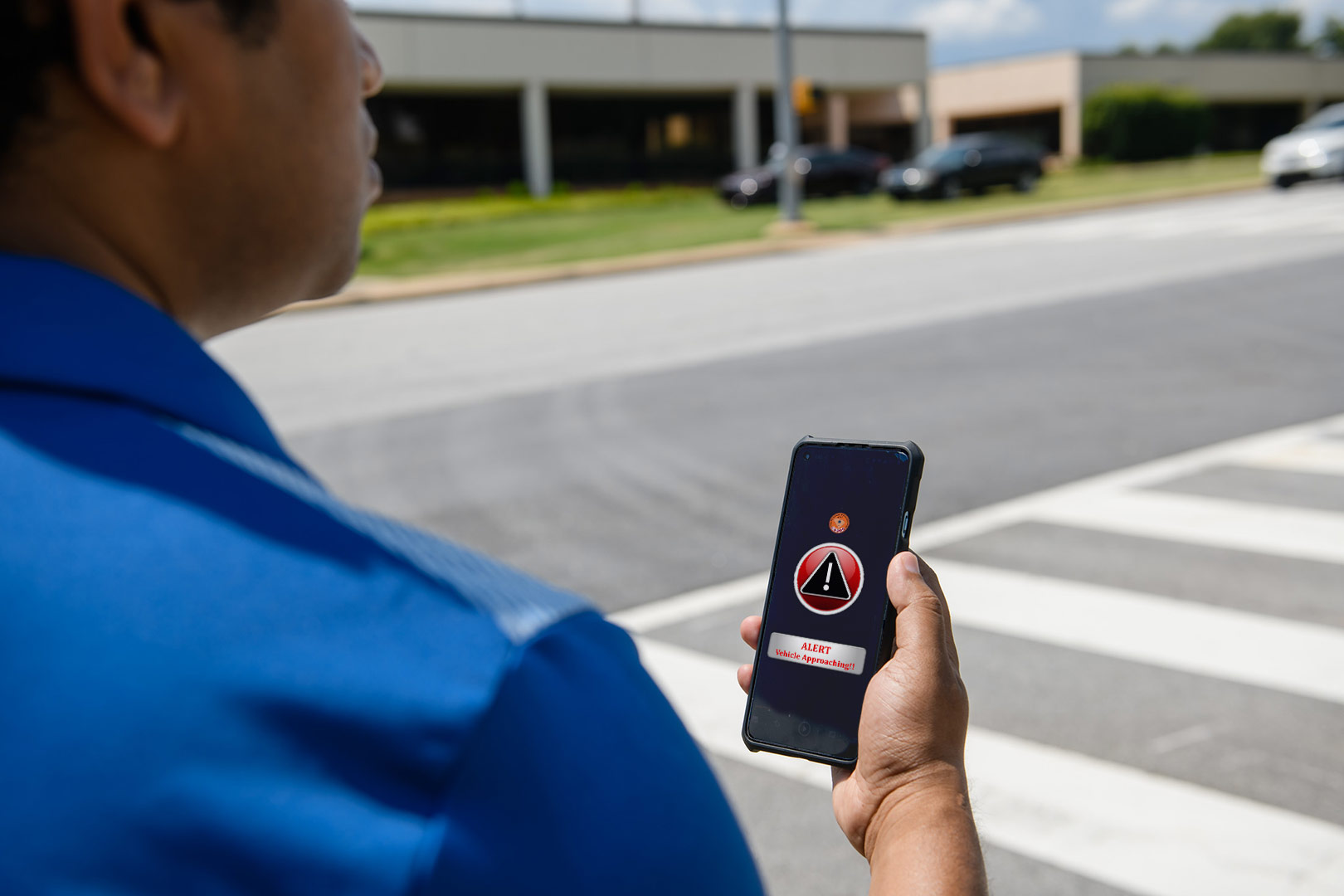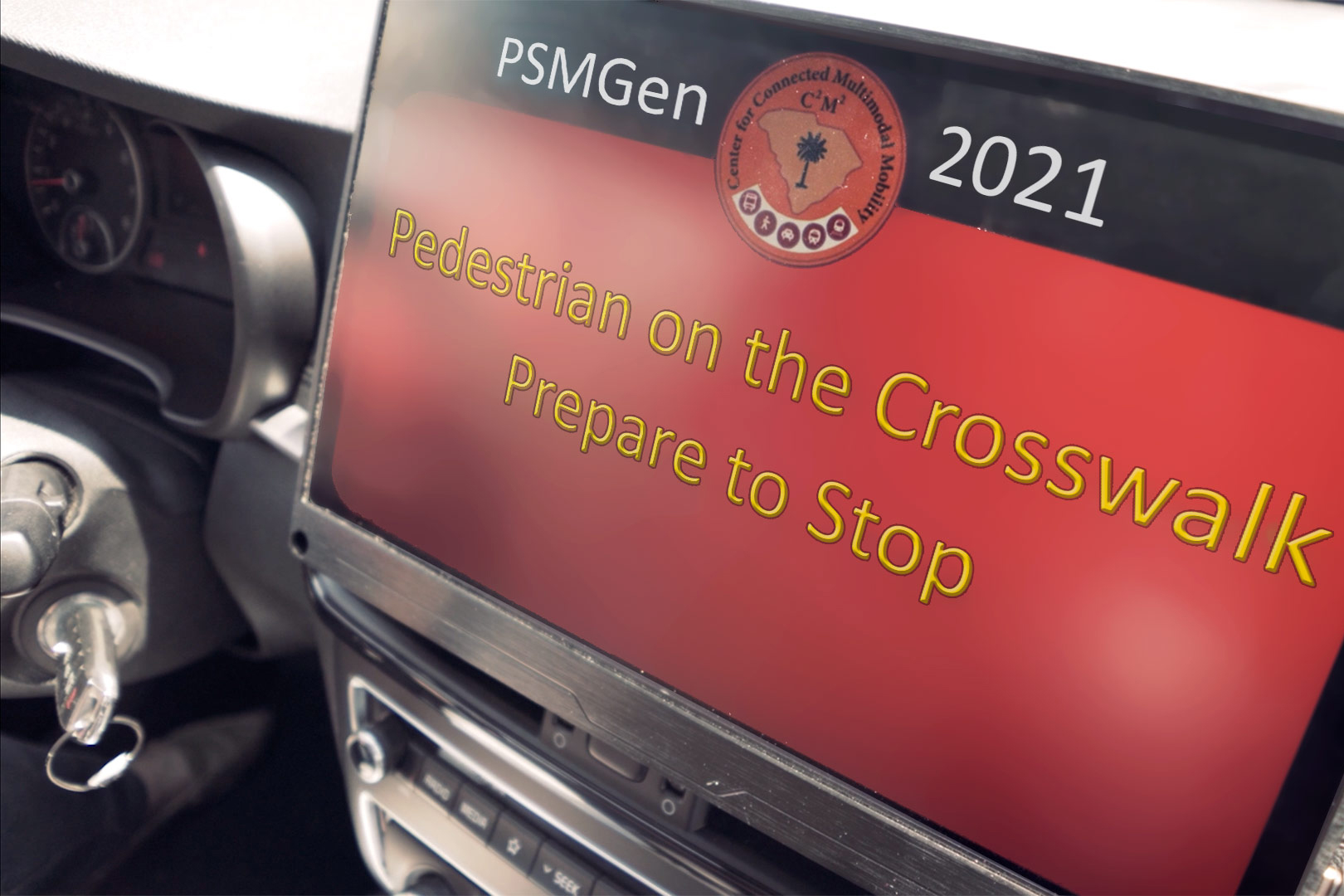Right next to where the Clemson Tigers play home basketball games, an intersection wired with cameras and communications devices is providing a glimpse into how smart cities of the future might work.
Right next to where the Clemson Tigers play home basketball games, an intersection wired with cameras and communications devices is providing a glimpse into how smart cities of the future might work.
Vehicles will be able to wirelessly talk to each other and roadside infrastructure, helping avoid accidents and keeping traffic flowing smoothly. Researchers see it as a step toward bringing widespread adoption of connected and autonomous vehicles to the nation’s roadways. It’s all part of a project led by Mashrur “Ronnie” Chowdhury, the Eugene Douglas Mays Chair in Transportation and director of the Center for Connected Multimodal Mobility (C²M²) headquartered at Clemson University.
Vehicles will be able to wirelessly talk to each other and roadside infrastructure, helping avoid accidents and keeping traffic flowing smoothly. Researchers see it as a step toward bringing widespread adoption of connected and autonomous vehicles to the nation’s roadways. It’s all part of a project led by Mashrur “Ronnie” Chowdhury, the Eugene Douglas Mays Chair in Transportation and director of the Center for Connected Multimodal Mobility (C²M²) headquartered at Clemson University.
Vehicles will be able to wirelessly talk to each other and roadside infrastructure, helping avoid accidents and keeping traffic flowing smoothly. Researchers see it as a step toward bringing widespread adoption of connected and autonomous vehicles to the nation’s roadways. It’s all part of a project led by Mashrur “Ronnie” Chowdhury, the Eugene Douglas Mays Chair in Transportation and director of the Center for Connected Multimodal Mobility (C²M²) headquartered at Clemson University.
One part of the research focuses on keeping pedestrians out of harm’s way as they cross the street. They would start off by downloading an app that would allow their smartphones to communicate with roadside infrastructure and vehicles.
One part of the research focuses on keeping pedestrians out of harm’s way as they cross the street. They would start off by downloading an app that would allow their smartphones to communicate with roadside infrastructure and vehicles.
The phone is able to make contact with a communication radio mounted on a pole at the intersection. These devices can also communicate with cars that are wirelessly connected to the system.
The phone is able to make contact with a communication radio mounted on a pole at the intersection. These devices can also communicate with cars that are wirelessly connected to the system.
When the pedestrian begins to cross the street, off-the-shelf cameras that cost about $50 each detect his movements. At the same time the pedestrian is crossing the street, a car is heading toward the intersection. The car is also equipped with a communication radio that allows it to communicate with roadside infrastructure.
When the pedestrian begins to cross the street, off-the-shelf cameras that cost about $50 each detect his movements. At the same time the pedestrian is crossing the street, a car is heading toward the intersection. The car is also equipped with a communication radio that allows it to communicate with roadside infrastructure.
Using information from the cameras and cars, computers mounted on the poles determine the location, speed and heading of the pedestrian and car. Within milliseconds, an algorithm developed by C²M² researchers determines whether a collision between a pedestrian and a vehicle is likely.
Using information from the cameras and cars, computers mounted on the poles determine the location, speed and heading of the pedestrian and car. Within milliseconds, an algorithm developed by C²M² researchers determines whether a collision between a pedestrian and a vehicle is likely.


If a collision seems imminent, the system sends a warning signal to the pedestrian (left photo) and the car (right photo) so each can take evasive action.


If a collision seems imminent, the system sends a warning signal to the pedestrian (top photo) and the car (bottom photo) so each can take evasive action.
Thanks to this technology, a collision is averted.
Thanks to this technology, a collision is averted.
There are other advantages, too. If all cars are connected, it could be possible to coordinate traffic flow so that no one ever has to stop for a red light again, yet there will be fewer accidents, researchers say.
There are other advantages, too. If all cars are connected, it could be possible to coordinate traffic flow so that no one ever has to stop for a red light again, yet there will be fewer accidents, researchers say.
The computer on the pole, running an algorithm created by C²M² researchers, prioritizes who should go first and tells cars how fast they should go to avoid having to stop at the intersection but still pass safely.
The computer on the pole, running an algorithm created by C²M² researchers, prioritizes who should go first and tells cars how fast they should go to avoid having to stop at the intersection but still pass safely.
Researchers with C²M² said their system has advantages over others that are similar. The C²M² system is centralized and connected to the cloud. That means it can gather information from multiple sources, such as social media and a traffic management center’s traffic alerts.
Researchers with C²M² said their system has advantages over others that are similar. The C²M² system is centralized and connected to the cloud. That means it can gather information from multiple sources, such as social media and a traffic management center’s traffic alerts.
The team’s peers have taken notice of its work. In September 2021, C²M² and Chowdhury were honored with IEEE’s ITS Institutional Lead Award, an honor that has also gone to the likes of the Google Self-Driving Car Team, Carnegie Mellon University and the University of California, Berkeley. The award recognizes C²M² and Chowdhury’s demonstrated leadership in promoting ITS technologies. The team continues to innovate in several fields that will be crucial to smart cities of the future, including quantum computing and cybersecurity. To inquire about collaborations, reach Dr. Chowdhury at mac@clemson.edu.
The team’s peers have taken notice of its work. In September 2021, C²M² and Chowdhury were honored with IEEE’s ITS Institutional Lead Award, an honor that has also gone to the likes of the Google Self-Driving Car Team, Carnegie Mellon University and the University of California, Berkeley. The award recognizes C²M² and Chowdhury’s demonstrated leadership in promoting ITS technologies. The team continues to innovate in several fields that will be crucial to smart cities of the future, including quantum computing and cybersecurity. To inquire about collaborations, reach Dr. Chowdhury at mac@clemson.edu.
This project is a collaboration between Clemson University and Benedict College. Funding is provided by the U.S. Department of Transportation.



This project is a collaboration between Clemson University and Benedict College. Funding is provided by the U.S. Department of Transportation.


